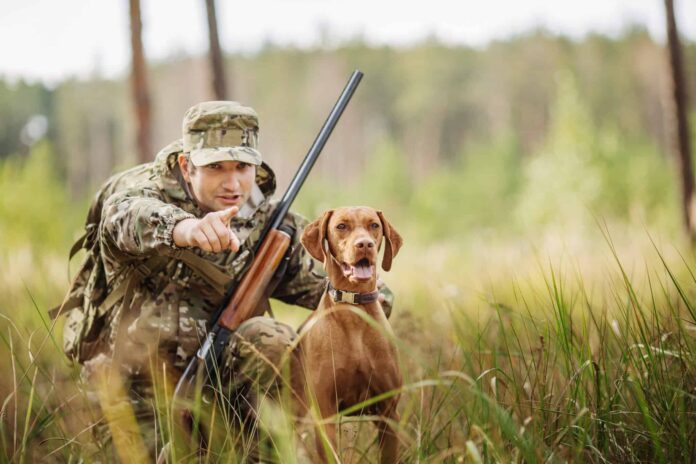Colorado is renowned for its breathtaking landscapes, diverse wildlife, and exceptional hunting opportunities. Among the most sought-after game in this state are mule deer and elk, drawing hunters from all over the country to experience the thrill of the chase in the Rocky Mountains. In this comprehensive guide, we’ll delve into the essentials of mule deer hunting and elk hunting in Colorado, offering tips, regulations, and insights to help you plan your next hunting adventure.
Mule Deer Hunting in Colorado
Habitat and Behavior
Mule deer, distinguished by their large ears and unique bounding gait, are a common sight across Colorado. They inhabit a range of environments, from the high alpine regions to the lower foothills and plains. Understanding their habitat preferences is crucial for a successful hunt. During the summer, mule deer are often found at higher elevations, but as winter approaches, they migrate to lower elevations in search of food.
Hunting Seasons and Regulations
Colorado Parks and Wildlife (CPW) manages the state’s mule deer populations and sets the hunting regulations. The primary seasons for mule deer hunting in Colorado are archery, muzzleloader, and rifle seasons, each offering different challenges and rewards.
- Archery Season: Typically runs from late August to late September.
- Muzzleloader Season: Usually scheduled in mid-September.
- Rifle Season: Divided into several segments from late October through mid-November.
Hunters must obtain a license and tag specific to the game management unit (GMU) where they plan to hunt. Licenses are distributed through a limited draw system, and preference points can improve your chances of drawing a tag in highly sought-after units.
Gear and Preparation
Successful mule deer hunting requires careful preparation. Essential gear includes a high-quality rifle or bow, appropriate ammunition or arrows, and reliable optics like binoculars and spotting scopes. Given Colorado’s rugged terrain, sturdy hiking boots and weather-appropriate clothing are also crucial. Pre-season scouting can significantly enhance your chances of success, allowing you to familiarize yourself with the terrain and deer movements.
Elk Hunt Colorado
Elk Habitat and Behavior
Elk, or wapiti, are one of North America’s most iconic big game animals. In Colorado, they roam across various landscapes, from dense forests to open meadows. During the rut, which occurs from late September to early October, bull elk are particularly vocal and active, making this an exciting time to hunt.
Hunting Seasons and Regulations
Like mule deer, elk hunt Colorado is governed by CPW, with seasons structured similarly across archery, muzzleloader, and rifle categories.
- Archery Season: Runs concurrently with mule deer archery season, from late August to late September.
- Muzzleloader Season: Falls in mid-September.
- Rifle Season: Divided into multiple segments from late October through mid-November, and an additional late season in December for select units.
Elk licenses are also allocated through a limited draw, with some over-the-counter options available for specific units and seasons. Hunters should be aware of the regulations pertaining to their chosen GMU, as well as any special rules for public and private lands.
Essential Gear and Techniques
Elk hunting demands robust equipment and thorough preparation. Key items include a high-caliber rifle or a powerful bow, suitable ammunition or broadheads, and quality optics. Given the physical demands of elk hunting, especially at high altitudes, physical fitness is essential. Hunters should also consider carrying a GPS device or topographical maps, as well as survival gear for emergencies.
Hunting Techniques
Spot and stalk, calling, and still hunting are popular techniques for elk hunting. During the rut, calling can be particularly effective, as bulls respond to cow calls and bugles. Patience and persistence are vital, as elk can cover vast distances and often inhabit challenging terrain.
Planning Your Hunt
Selecting a Hunting Unit
Choosing the right GMU is crucial for a successful hunt. Factors to consider include the unit’s terrain, accessibility, and population density of the game. CPW provides detailed statistics and maps to help hunters make informed decisions.
Accommodations and Logistics
Planning where to stay and how to navigate the hunting area is essential. Options range from camping in the backcountry to staying in nearby towns or hunting lodges. Ensure your accommodations align with your hunting strategy, whether it’s a multi-day backcountry expedition or day hunts from a base camp.
Guided Hunts
For those new to hunting in Colorado or looking to increase their chances of success, hiring a guide can be beneficial. Experienced guides offer invaluable local knowledge, from prime hunting spots to effective techniques. They also handle logistics, allowing hunters to focus on the experience.
Conservation and Ethics
Responsible hunting is about more than just the thrill of the chase; it’s about conservation and respect for wildlife. Hunters play a critical role in wildlife management, helping to maintain healthy populations and ecosystems. Ethical hunting practices, such as fair chase and proper field dressing, ensure that future generations can continue to enjoy Colorado’s rich hunting heritage.
Conclusion:
Whether you’re pursuing mule deer or elk, hunting in Colorado offers an unparalleled experience filled with challenge, adventure, and the beauty of nature. Proper preparation, respect for regulations, and ethical hunting practices are key to a successful and rewarding hunt.

